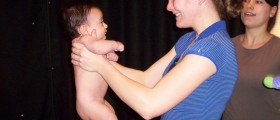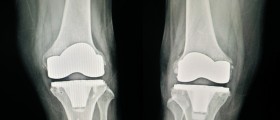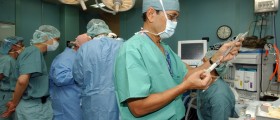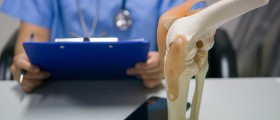The back or spine surgery carries a risk of numerous postoperative complications. They can be classified according to different patterns. Mostly all the complications are divided into general complications, complications of the nerves, and complications connected to implant and fusion.
General Complications after Back Surgery
Complications caused by the anesthesia are connected to the specific medications that are used in the procedure. The direct effect of anesthesia may reflect on the lung and heart's function. Nausea and vomiting occur regularly after general anesthesia has been used. The tube which is placed into the throat may damage the vocal cord. However, the damage is transient.

In the case of spine surgery bleeding can occur and the intensity of bleeding depends on the organ or tissue that has been damaged. Patients who have undergone spinal surgery may develop blood clots in the veins of the legs. Deep vein thrombosis is a source of blood clots that can detach and cause a pulmonary embolism. The patients are administered anticoagulants prophylactically and monitored for possible further complications caused by blood clots.
The tear of the dura is another complication. During the surgery, this membrane can be damaged. The problem is noticed during the surgery and the surgeon simply repairs the defect. If the tear has not been noticed the cerebrospinal fluid will leak through the dura defect and lead to a headache. This condition increases the risk of meningitis as well. In case the defect does not heal on its own additional surgery is required.
Infection is one more complication after spinal surgery. The antibiotics are administered prior to and after the surgery and they reduce the risk of possible infections. The infection can be superficial. However, it can even spread onto the deeper layers and tissues of the back. Sometimes the infection is so deep that already placed metal screws or plates need to be taken out.
Finally, a patient may suffer from chronic pain due to the operation.
- This was a retrospective, longitudinal, observational study comprising all discharges from Norwegian public hospitals over a 15-year period (1999–2013). It is estimated that currently ~7% of all elective spinal surgeries take place in the private sector.
- Inclusion criteria were age ?18 years and a lumbar spine diagnosis code (ICD-codes from M40 to M54). Exclusion criteria were diagnoses related to the cervical, thoracic or an unspecified region of the spine, as well as diagnoses indicating cancer, trauma, spinal fractures, pregnancy, spinal infections and inflammatory diseases.
- A total of 67?855 discharges for 57?081 individual patients were identified. A total of 56?764 (83.7%) discharges were for simple surgical procedures and 11?091 (16.3%) discharges were for complex surgical procedures. Most of the complex surgical procedures were fusion surgeries (94.0%). Further, 48?495 individual patients (71.5%) had only one discharge due to spinal surgery. The mean age of the patients was 52.3 (SD 15.9), and 51.4% were men.
- Complications were identified by the following ICD-10 codes occurring within 30 days after a discharge: postoperative haematoma (T81.0), postprocedural shock (T81.1), unintentional puncture/laceration (T81.2), disruption of wound/wound dehiscence (T81.3), infection following a procedure (T81.4), foreign body accidentally left in body following procedure (T81.5), acute reaction to foreign body accidentally left during a procedure (T81.6), vascular complications following a procedure (T81.7), unspecified or other complications of procedure, either on initial surgical admission or on readmission (T81.8–9) and complications during anaesthesia (T88.4–5). NAW (reoperation) and AW (reoperations of the nervous system) procedure codes that occurred within 30 days after the initial surgery were also classified as complications. NAW and AW procedure codes occurring later than 30 days after an initial procedure were classified as reoperations.
Nerve Complications
During the surgery spinal nerves can get damaged. This can lead to paralysis of the area that is innervated by the damaged nerve. The very spinal cord can be injured either by surgical manipulation or by postoperative swelling. Some patients have even experienced sexual dysfunction due to the damage to the nerves that innervate the pelvic area and organs situated in the pelvis.
Complication Related to Implants and Fusion
The majority of these complications are connected to the improper or delayed union. They require additional surgical procedures. The things that are used in fusion such as metal screws or plates and so on can be dislocated and this also requires repeated surgery. The second surgery is conducted even in case of implant migration.
Pseudoarthrosis is another complication. This condition features with forming of a false joint. Namely, the fractured bone does not heal properly and instead of complete calcification of the fractured spot, the bone is partially replaced with the cartilage so that the broken fragments can move and are not fused together.
- www.nhs.uk/conditions/lumbar-decompression-surgery/risks/
- medlineplus.gov/ency/patientinstructions/000313.htm
- Photo courtesy of https://fshoq.com/free-photos/p/206/surgery-in-hospital-clinic-and-doctors
















_f_280x120.jpg)
Your thoughts on this
Loading...